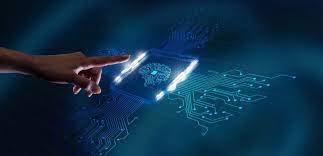Artificial Intelligence (AI) has emerged as a transformative technology, revolutionising industries and reshaping the way we live and work. From healthcare to finance, transportation to education, AI is driving unprecedented advancements, propelling us into a future where machines can learn, reason, and interact like never before. As we stand at the precipice of this AI-powered era, the possibilities are both awe-inspiring and daunting, offering immense potential to solve complex problems, accelerate innovation, and unlock new frontiers of human achievement.
AI tools, or artificial intelligence tools, refer to software or applications that utilise artificial intelligence techniques and algorithms to perform specific tasks or provide intelligent solutions.
The AI tools are revolutionising their respective sectors. In healthcare, tools like IBM Watson Health and Zebra Medical Vision are enhancing medical imaging analysis and disease diagnosis. In finance, AlphaSense and DataRobot are used for fraud detection and risk assessment. Manufacturing benefits from tools such as Sight Machine and Augury for predictive maintenance and quality control. Retail and e-commerce industries rely on Adobe Sensei and Dynamic Yield for personalised recommendations. Transportation and logistics utilise Waymo and FourKites for route optimisation. Energy and utilities sectors employ AutoGrid and Sentient Energy for energy grid management. Agriculture benefits from Blue River Technology and Taranis for crop monitoring. Education incorporates Knewton and Smart Sparrow for personalised learning.
AI tools have been increasingly employed in policing and security to enhance law enforcement efforts, improve public safety, and aid in crime prevention. Here are some examples of AI tools used in this domain.
Facial Recognition: AI-powered facial recognition technology is utilised for identifying individuals in surveillance footage or comparing faces against criminal databases. It can help law enforcement agencies in locating suspects, preventing crimes, and enhancing security at public events.
Predictive Policing: AI algorithms analyse historical crime data, demographics, and other relevant factors to identify patterns and predict potential crime hotspots.
Video Analytics: AI-based video analytics tools can analyse vast amounts of surveillance footage in real-time. They can detect and alert authorities to suspicious activities, such as unauthorized access, loitering, or abnormal behaviour, enabling quick response and prevention of potential threats.
Natural Language Processing (NLP): NLP technology enables the analysis of large volumes of textual data, including social media posts, online forums, and news articles. It helps law enforcement agencies monitor public sentiment, identify potential threats, and detect trends related to criminal activities or public safety concerns.
Data Analysis and Visualization: AI tools can process and analyse massive amounts of data from various sources, such as crime databases, sensor networks, or social media. They can uncover hidden patterns, relationships, and insights to support investigations, intelligence gathering, and decision-making in law enforcement and security operations.
Cybersecurity: AI-based cybersecurity tools use machine learning algorithms to detect and respond to cyber threats in real-time. They can identify anomalies, patterns of malicious activity, and potential vulnerabilities in networks, systems, or user behaviour, enhancing overall security measures.
Crime Analysis and Investigation: AI tools assist in crime analysis and investigation by processing large volumes of data, identifying connections between cases, and generating insights to aid detectives and investigators.
Impact on Employment: The impact of AI on employment is a complex and multifaceted topic. While AI has the potential to automate certain tasks and job functions, it is important to note that it also creates new opportunities and transforms industries in ways that can generate additional employment.
1. Automation of Tasks: AI can automate repetitive and mundane tasks, which may lead to job displacement in certain industries. For example, tasks like data entry, basic customer support, or routine manufacturing processes can be automated with AI technologies. However, it is important to note that AI often complements human workers rather than fully replacing them, as it still requires human supervision, decision-making, and creativity.
2. Job Transformation: AI is more likely to transform job roles rather than eliminate them entirely. Many tasks within professions can be automated, allowing professionals to focus on higher-value work that requires creativity, problem-solving, and critical thinking.
3. Creation of New Jobs: AI has the potential to create new job opportunities. The development, implementation, and maintenance of AI systems require skilled professionals such as data scientists, AI engineers, machine learning experts, and AI ethicists. Additionally, new industries and sectors are emerging as a result of AI advancements, leading to job growth in areas like AI research, AI consulting, and AI-driven product development.
4. Skills and Education: The widespread adoption of AI necessitates a shift in skills and education requirements. Professionals will need to acquire new skills, including AI literacy, data analysis, and critical thinking, to adapt to the changing job market. Upskilling and reskilling programs will play a crucial role in helping individuals transition into new roles that complement AI technologies.
Therefore, while AI may automate some tasks and transform certain job roles, it is unlikely to render software engineers and other professionals completely jobless. The key lies in adaptability and acquiring new skills that complement AI technologies. By embracing the opportunities presented by AI and focusing on human-machine collaboration, we can harness the potential of AI while ensuring a workforce that remains relevant and resilient in the face of technological advancements.

Shailendra Srivastava, a retired Director General of Police and former IPS 1986 MP cadre with a PhD in botany, writes on law enforcement, education, wildlife, and environment for various media houses. He’s also pursuing post-graduation in astrology.























